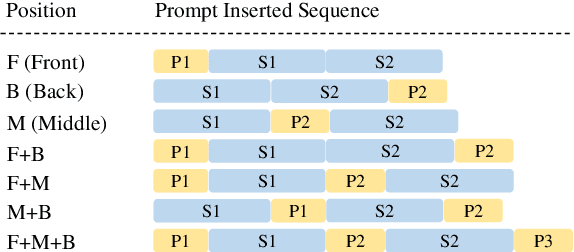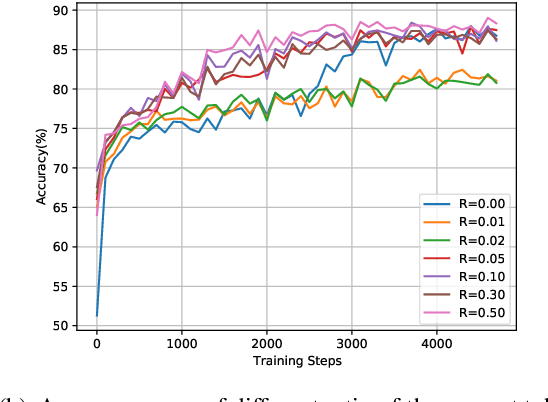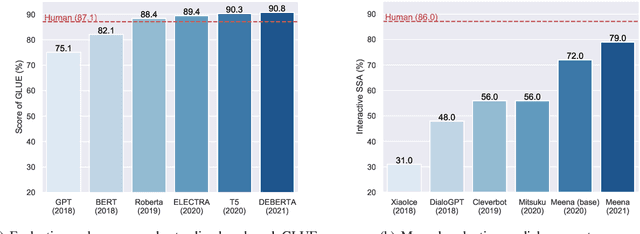Wentao Han
CPM-2: Large-scale Cost-effective Pre-trained Language Models
Jun 24, 2021



Abstract:In recent years, the size of pre-trained language models (PLMs) has grown by leaps and bounds. However, efficiency issues of these large-scale PLMs limit their utilization in real-world scenarios. We present a suite of cost-effective techniques for the use of PLMs to deal with the efficiency issues of pre-training, fine-tuning, and inference. (1) We introduce knowledge inheritance to accelerate the pre-training process by exploiting existing PLMs instead of training models from scratch. (2) We explore the best practice of prompt tuning with large-scale PLMs. Compared with conventional fine-tuning, prompt tuning significantly reduces the number of task-specific parameters. (3) We implement a new inference toolkit, namely InfMoE, for using large-scale PLMs with limited computational resources. Based on our cost-effective pipeline, we pre-train two models: an encoder-decoder bilingual model with 11 billion parameters (CPM-2) and its corresponding MoE version with 198 billion parameters. In our experiments, we compare CPM-2 with mT5 on downstream tasks. Experimental results show that CPM-2 has excellent general language intelligence. Moreover, we validate the efficiency of InfMoE when conducting inference of large-scale models having tens of billions of parameters on a single GPU. All source code and model parameters are available at https://github.com/TsinghuaAI/CPM.
Pre-Trained Models: Past, Present and Future
Jun 15, 2021



Abstract:Large-scale pre-trained models (PTMs) such as BERT and GPT have recently achieved great success and become a milestone in the field of artificial intelligence (AI). Owing to sophisticated pre-training objectives and huge model parameters, large-scale PTMs can effectively capture knowledge from massive labeled and unlabeled data. By storing knowledge into huge parameters and fine-tuning on specific tasks, the rich knowledge implicitly encoded in huge parameters can benefit a variety of downstream tasks, which has been extensively demonstrated via experimental verification and empirical analysis. It is now the consensus of the AI community to adopt PTMs as backbone for downstream tasks rather than learning models from scratch. In this paper, we take a deep look into the history of pre-training, especially its special relation with transfer learning and self-supervised learning, to reveal the crucial position of PTMs in the AI development spectrum. Further, we comprehensively review the latest breakthroughs of PTMs. These breakthroughs are driven by the surge of computational power and the increasing availability of data, towards four important directions: designing effective architectures, utilizing rich contexts, improving computational efficiency, and conducting interpretation and theoretical analysis. Finally, we discuss a series of open problems and research directions of PTMs, and hope our view can inspire and advance the future study of PTMs.
CPM: A Large-scale Generative Chinese Pre-trained Language Model
Dec 01, 2020



Abstract:Pre-trained Language Models (PLMs) have proven to be beneficial for various downstream NLP tasks. Recently, GPT-3, with 175 billion parameters and 570GB training data, drew a lot of attention due to the capacity of few-shot (even zero-shot) learning. However, applying GPT-3 to address Chinese NLP tasks is still challenging, as the training corpus of GPT-3 is primarily English, and the parameters are not publicly available. In this technical report, we release the Chinese Pre-trained Language Model (CPM) with generative pre-training on large-scale Chinese training data. To the best of our knowledge, CPM, with 2.6 billion parameters and 100GB Chinese training data, is the largest Chinese pre-trained language model, which could facilitate several downstream Chinese NLP tasks, such as conversation, essay generation, cloze test, and language understanding. Extensive experiments demonstrate that CPM achieves strong performance on many NLP tasks in the settings of few-shot (even zero-shot) learning. The code and parameters are available at https://github.com/TsinghuaAI/CPM-Generate.
CyLKs: Unsupervised Cycle Lucas-Kanade Network for Landmark Tracking
Nov 28, 2018



Abstract:Across a majority of modern learning-based tracking systems, expensive annotations are needed to achieve state-of-the-art performance. In contrast, the Lucas-Kanade (LK) algorithm works well without any annotation. However, LK has a strong assumption of photometric (brightness) consistency on image intensity and is easy to drift because of large motion, occlusion, and aperture problem. To relax the assumption and alleviate the drift problem, we propose CyLKs, a data-driven way of training Lucas-Kanade in an unsupervised manner. CyLKs learns a feature transformation through CNNs, transforming the input images to a feature space which is especially favorable to LK tracking. During training, we perform differentiable Lucas-Kanade forward and backward on the convolutional feature maps, and then minimize the re-projection error. During testing, we perform the LK tracking on the learned features. We apply our model to the task of landmark tracking and perform experiments on datasets of THUMOS, 300VW, and Mugsy.
 Add to Chrome
Add to Chrome Add to Firefox
Add to Firefox Add to Edge
Add to Edge